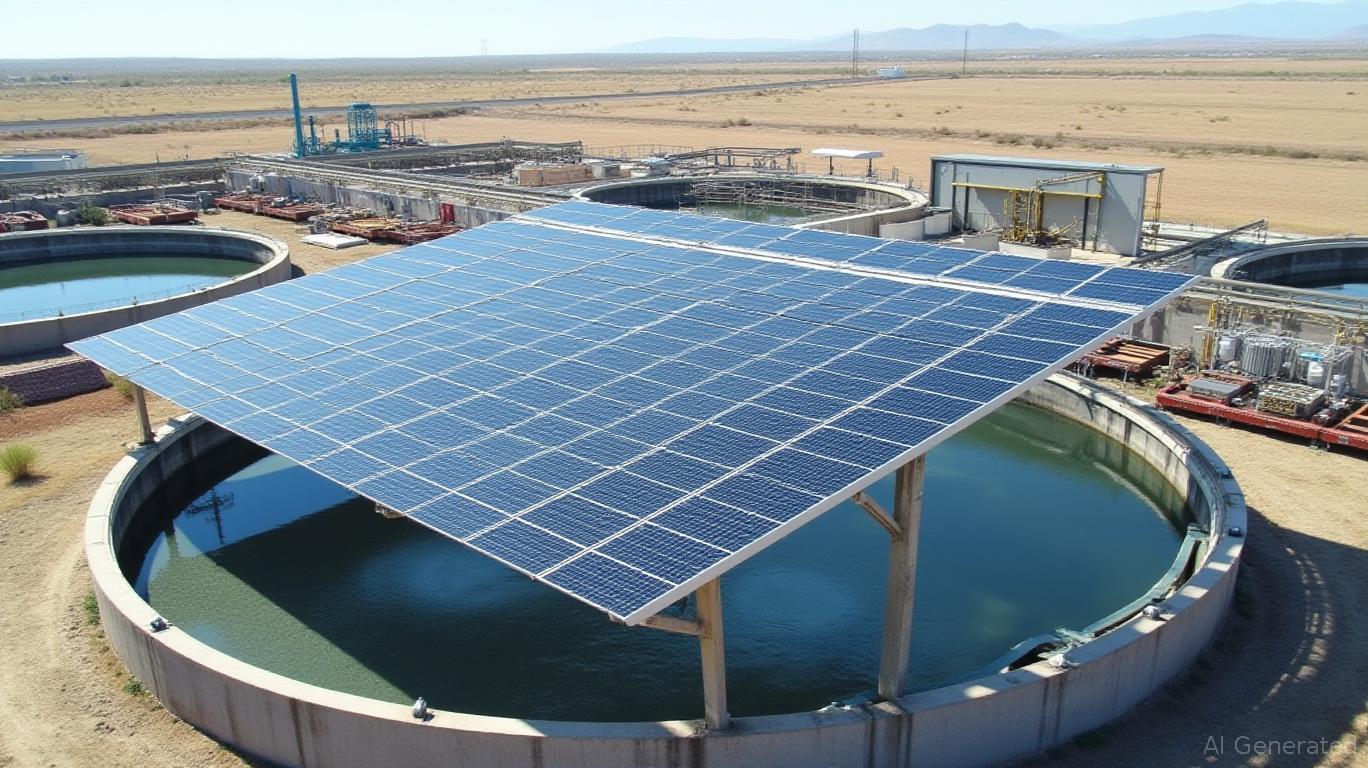Ameresco's Pendleton Solar Canopy: A Blueprint for Renewable Infrastructure Investment
The small city of Pendleton, Oregon, has quietly become a poster child for the future of municipal decarbonization. At its wastewater treatment facility,
Inc. (AMRC) has deployed a solar canopy system that blends cutting-edge energy efficiency with fiscal pragmatism—a model that could redefine how communities fund and operate renewable infrastructure.The 240-kW solar canopy, installed in 2024, generates 325,000 kWh annually, slashing the facility's energy costs by 30% and reducing carbon emissions by 310 metric tons per year. But its true significance lies in its structure: a public-private partnership (PPP) that leverages state grants, federal incentives, and an Energy Savings Performance Contract (ESPC) to eliminate upfront costs for the city. This framework isn't just a one-off solution; it's a replicable template for municipalities nationwide seeking to align climate goals with budgetary constraints.
The PPP Playbook
The Pendleton project exemplifies how PPPs can bridge the gap between ambitious sustainability targets and limited municipal resources. Ameresco designs, funds, and operates the system, while the city pays nothing upfront. Instead, it shares in the cost savings generated by reduced energy bills—a structure that guarantees Ameresco's profitability while shielding the city from risk. This model is critical as cities grapple with aging infrastructure and pressure to meet net-zero mandates.
The project's funding mosaic offers further insight. The Oregon Department of Energy's Community Renewable Energy Grant Program provided critical state support, while federal tax credits and utility incentives from Pacific Power covered additional costs. Together, these layers create a “stackable” incentive ecosystem that lowers the barrier to entry for renewable projects.

Why Decentralized Energy Matters
The Pendleton project underscores a broader shift toward decentralized energy systems. Solar canopies, combined with battery storage (as planned for the site's future BESS), allow facilities to manage their own energy needs, reducing reliance on grid power and vulnerability to price volatility. This resilience is increasingly vital as extreme weather disrupts traditional energy infrastructure.
Ameresco's expertise in such systems positions it to capitalize on a growing market. The U.S. municipal renewable energy sector is projected to hit $120 billion by 2030, driven by federal programs like the Inflation Reduction Act (IRA) and state-level net-zero mandates. The company's track record—evident in projects like the Pendleton canopy and its virtual power plant for the Fort Detrick military base—demonstrates its ability to design, finance, and scale these solutions.
Investment Thesis: AMRC as a Climate Infrastructure Leader
Ameresco's stock has underperformed market benchmarks in recent quarters, trading at a 25% discount to its 52-week high. However, this presents a buying opportunity for investors focused on climate-resilient infrastructure. Key catalysts include:
- ESPC Pipeline Growth: The Pendleton model is already being replicated. Ameresco's ESPC backlog stands at $2.1 billion, with 60% tied to municipal clients—a figure likely to rise as cities prioritize decarbonization.
- IRA Windfalls: Federal grants for renewable projects (like the Pendleton canopy's $2.4 million in CREP funding) are accelerating. Ameresco's project portfolio is well-positioned to tap into IRA's $369 billion in clean energy incentives.
- Battery Storage Synergy: The planned BESS integration at Pendleton previews a lucrative growth vector. Energy storage revenue is expected to account for 40% of Ameresco's profits by 2027, as utilities and municipalities seek to pair solar with storage.
Critics may cite near-term headwinds, including supply chain constraints and project delays. However, the company's backlog of shovel-ready projects and its focus on turnkey solutions mitigate execution risks.
Final Analysis
Ameresco's Pendleton project isn't just a solar installation—it's a masterclass in how to monetize climate action. The company's ability to structure low-risk, high-reward partnerships with municipalities gives it a first-mover advantage in a sector poised for explosive growth. With a P/E ratio of 12x (well below peers like Tesla or NextEra), AMRC offers a compelling entry point for investors seeking exposure to decentralized energy and urban resilience.
The writing is on the wall: as cities worldwide race to decarbonize, Ameresco's playbook will be in high demand. For patient investors, this is a chance to profit from a transition that's already underway.

Comments
No comments yet